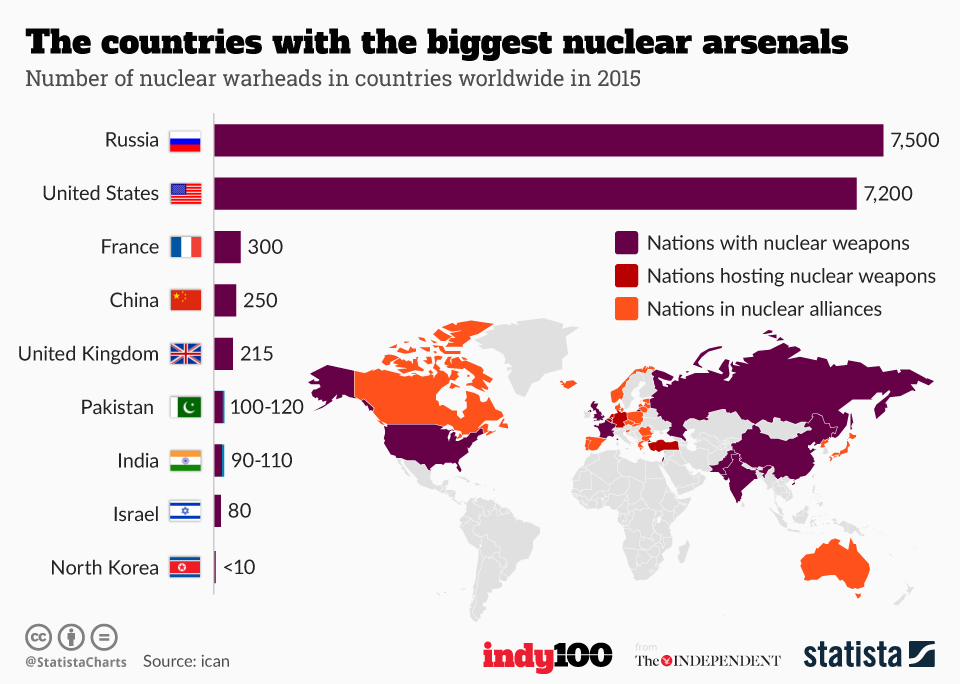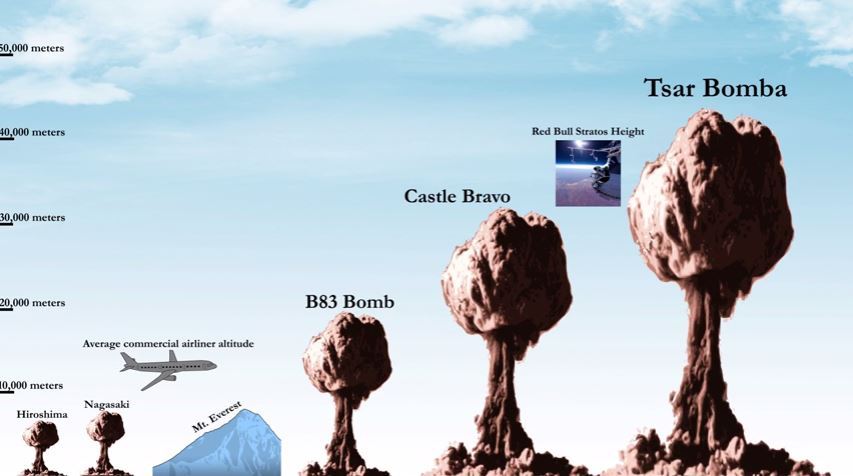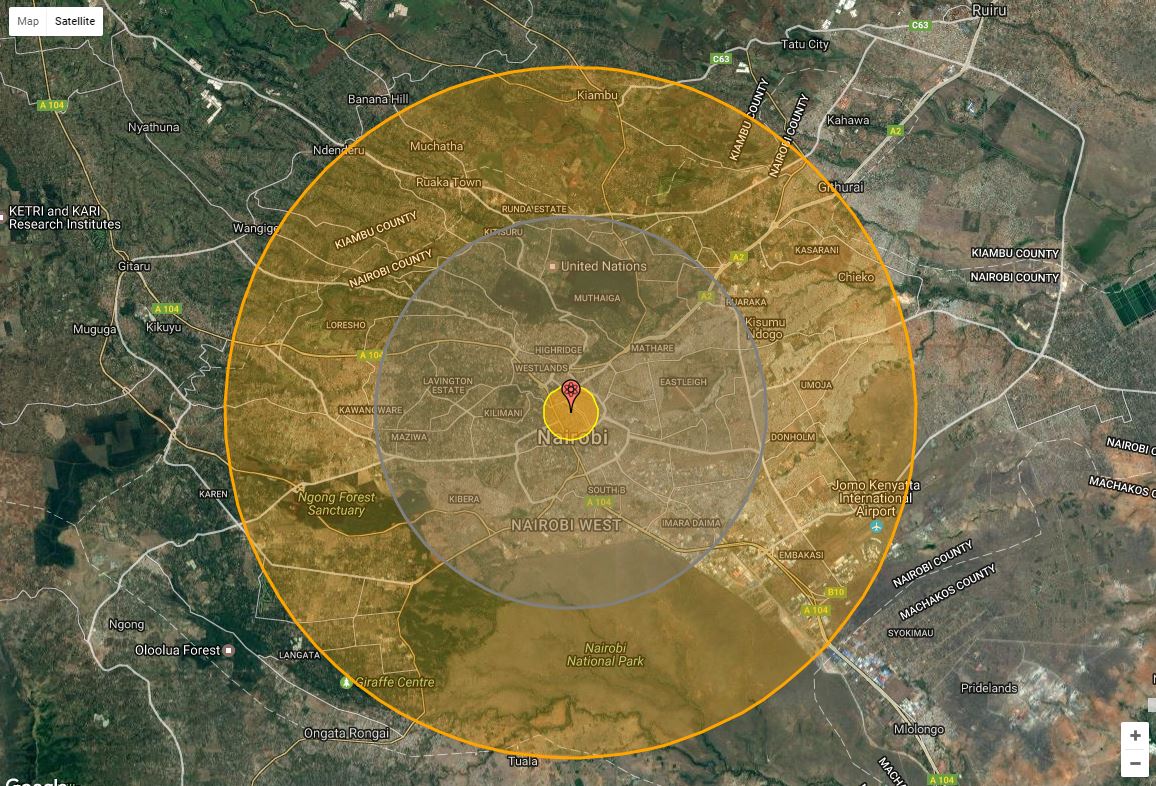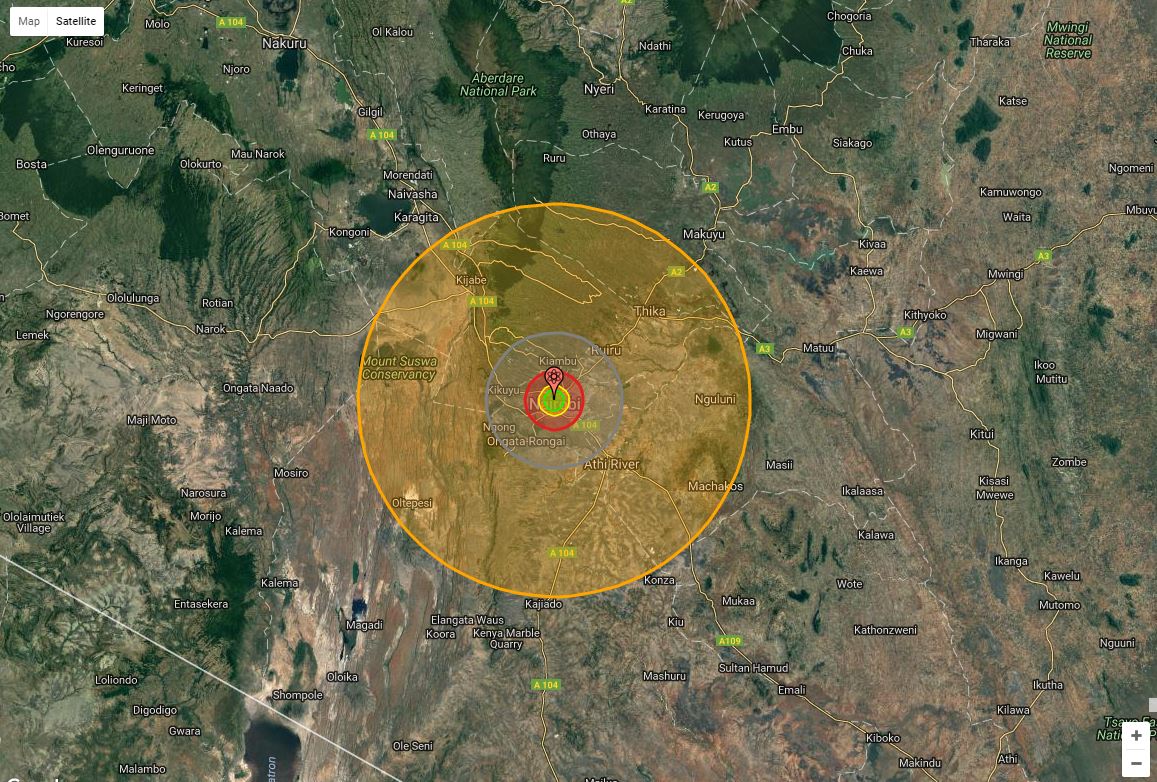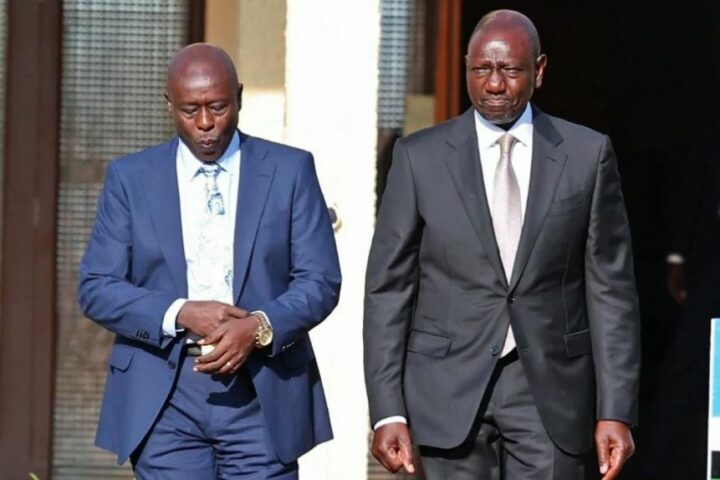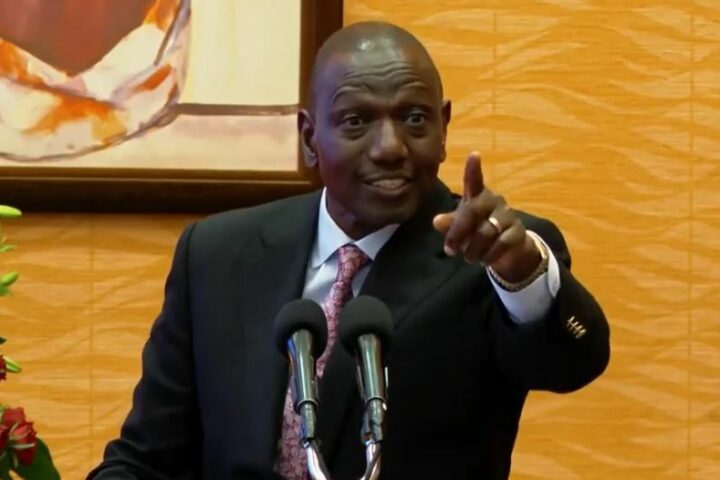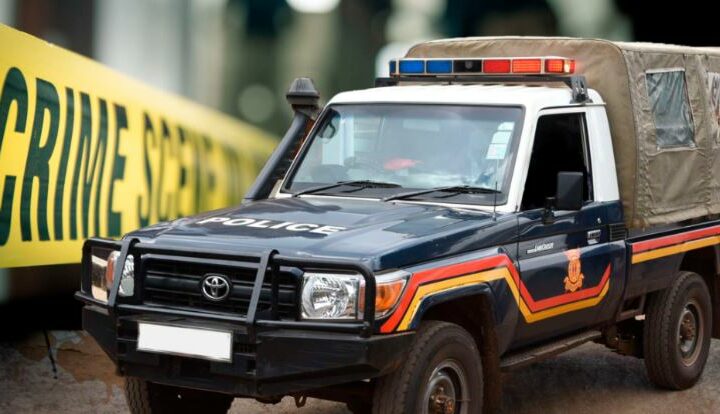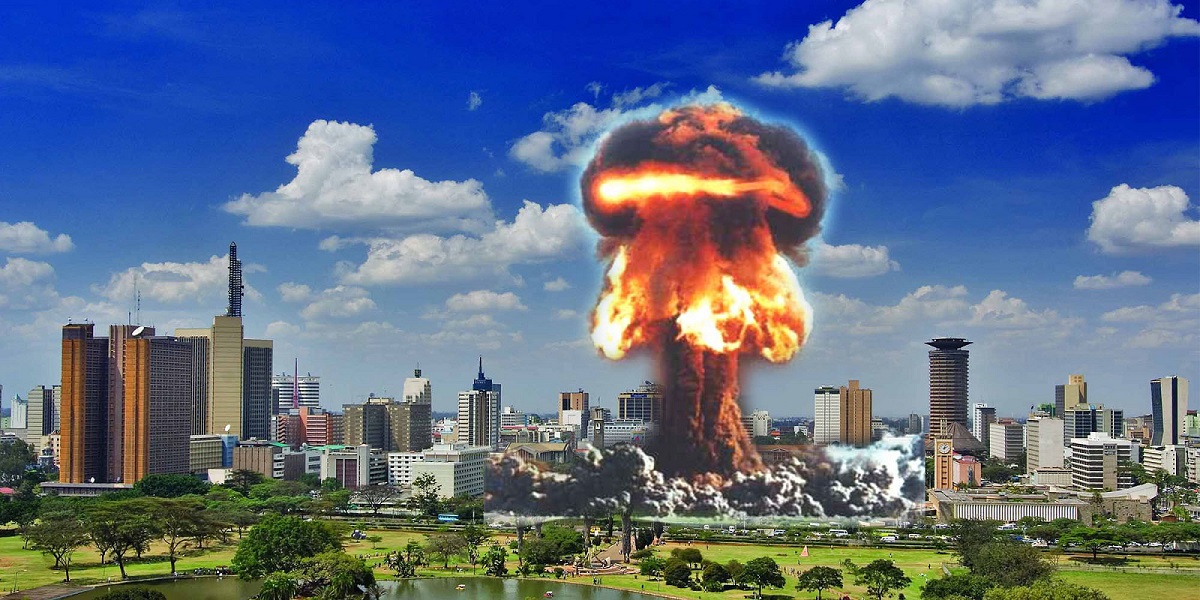
Erdogan will now likely leave office in 2034 after serving 3 terms of 5 years each starting 2019. But since the Turkish people have voluntarily moved from a democracy to a dictatorial regime, who knows whether he will extend his stay.
Turkey is very important in Europe’s and the Middle East’s geopolitics. Geographically, only 5% of Turkey is in Europe. Its largest city Istanbul is split between Europe and Asia. This kind of convergence of different cultures is not always a good thing. There are constant threats of religious conflicts, terrorism etc.
Europe has just gotten itself another strongman, and though Turkish military is not the greatest in the world, Erdogan is respected in the Arab world and probably has a lot of influence. If not, he has just bought himself 2 decades to work on that.
Then there are the events that have everyone talking about World War 3.
The United States recently elected a man with itchy fingers, who will not hesitate to obliterate real and imaginary enemies. Just recently, he unleashed over 50 missiles on Syria, to punish the administration for gassing its own citizens. Most people however agree that was the wrong move, considering the fact that Assad’s government may not have been responsible for the chemical attacks.
Assad may be a dictator, but he knows to choose his battles wisely. Having received warnings from the US and other countries against using chemical weapons, most people don’t see how he would benefit by using them, especially since there are so many ways to kill your enemy.
[showad block=3]
The only people who benefited from the US airstrikes were the terrorists Assad is fighting.
The results of those strikes ended up straining US-Russia relationship. We’ve seen this game before.
Donald Trump is also not a big fan of Kim Jong-un. The North Korean dictator is continuously testing nuclear weapons, and this unsettles the United States. From what Trump has been tweeting, it looks like its just a matter of days or weeks before he takes action.
Kim Jong-un knows he is no match for the US, but he is suicidal and wouldn’t mind mutual distraction.
It’s a bit scary when you think about Kim’s confidence. Does he have intercontinental missiles capable of delivering nuclear bombs to the US? It’s good to note that though anti-missile defense has advanced, it is still believed to be impossible to intercept them 100% of the time. And a single missile sneaking through may mean the end of a large city.
You can therefore understand why people are all of a sudden talking about World War 3. If you look at the happenings in all these countries, the future looks bleak.
“I know not with what weapons World War III will be fought, but World War IV will be fought with sticks and stones.” Albert Einstein.
Einstein was spot on. If the United States and Russia were fighting on opposite sides, it would probably mean the end of the world.
There’s a treaty to greatly reduce the number of nuclear arsenals per country, but with Trump in office, who knows?
The world has about 15,000 nuclear warheads, with over 90% of these shared between Russia and the US.
Though there’s no scientific agreement, it is generally agreed that detonating all these warheads would lead to the mass extinction of many species, possibly even mankind. Those who survive the blast would have to deal with the radiation. It is estimated that 40% of the ash and smoke would stay in the stratosphere for at least 10 years, and do irreparable damage to the ozone layer.
Global temperatures would drop colder than they were 18,000 years ago during the ice age, and remain that way for decades.
Hiroshima and Nagasaki remain the only two times a nuclear weapon has been used in warfare.
The two atomic bombs dropped in the two Japanese cities were called ‘Little Boy’ and ‘Fat Man’. Between them, they killed more than 200,000 people.
But compared to modern nuclear weapons, the two look like a toy that was put together by a 5-year old.
‘Fat Man’ produced an explosion of about 21 kilotons, equivalent to 21,000 tonnes of TNT. It was the bigger of the two.
The most common warhead in the US today is the B83, which has a maximum yield of 1.2 megatons (1,200 kilotons). That is nearly 60 times more powerful than the Nagasaki atomic bomb.
The most powerful nuclear weapon ever, The Tsar Bomba, was tested by the Soviet Union in 1961. It had a yield of more than 50 megatons. That’s 2500 times more powerful than the Nagasaki bomb and 3300 times more powerful than the Hiroshima bomb.
So what really makes a nuclear bomb this devastating? Well, it’s not just the explosion.
A world war has a way of bringing in even the unlikeliest countries. Unless Kenya adopts neutrality, we would sooner or later have to align with either the East or the West… or whoever is fighting.
Assuming Nairobi is the unfortunate recipient of a nuclear bomb, what do you think will be the situation? In this case, let’s work with the CBD as ground zero. (The bomb doesn’t even have to touch the ground. It can detonate mid-air with almost similar results.)
Small Hiroshima Bomb (15 kilotons)
The small red circle represents the ‘Fireball’ radius. That’s where the actual explosion happens, and that would only touch part of the CBD.
This would be the most ‘merciful’ area, because everyone would vaporize instantly and not have a clue of what just happened. The temperature here will be waaaaaay hotter than the surface of the sun. For a brief moment, temperatures would be a few million degrees celsius. For comparison, the surface of the sun is only 5,600 degrees celsius.
The green circle represents the ‘Radiation’ radius.
This area has a 50-90% mortality rate from radiation effects. Death can occur between several hours or several weeks. The University of Nairobi, City square and a huge chunk of Kenyatta Avenue would fall in this category.
The blue circle represents the ‘Air blast’ radius.
A huge wind will sweep outwards to the railway station on one side, Ring road, Murang’a road, Ngara, Valley road among others. Most buildings will be flattened, and fatalities will be mostly as a result of falling debris. You can expect tens of thousands of deaths in this region.
The orange circle represents the ‘Thermal radiation’ radius.
Parts of Chiromo, Upper Hill, Westlands etc. fall in this radius. Here, unless you’re in a freezer in a bunker, there’s a near 100% chance you’ll suffer 3rd degree burns.
Though you might end up disabled, there’s some consolation in that most of these burns are painless since they destroy the pain nerves.
B-83. Largest Bomb in US Arsenal (1.2 megatons)
Fireball Radius – 1.04 kilometres.
Look at it this way, if the bomb goes off at the newly constructed University of Nairobi Towers, everyone at the Railway Station will die instantly… vaporized or incinerated.
Air blast Radius – 7.47 kilometres
Nearly every residential building in Kibera, Kilimani, Lavington, Nairobi West, Upper Hill, South B, Imara Daima, Mathare, Eastleigh, Westlands, Muthaiga, etc. would be flattened by a powerful 5 psi ‘wind’.
Any airplane less than 3 km high would also come crashing down.
Thermal Radiation Radius – 13.2 kilometres.
This is the region where 3rd degree burns will occur.
Affected areas: Jomo Kenyatta International Airport, Umoja, Syokimau, Kasarani, Runda, Ruaka, Loresho, Jamhuri etc.
Tsar Bomba. Largest Bomb Tested by USSR (50 Megatons)
The Tsar Bomba was tested by the USSR in 1961.
It produced 1.4% the power output of the sun. The shockwaves from the epicentre went round the earth 3 times. Its huge bright light was visible nearly 1000 kilometres away. If for instance it went off in Mombasa, people in Kampala would be able to see it.
It weighed 25 tonnes, and if it were not for the 800 kg parachute that slowed it down, the plane that delivered it would not have made it out. The United States was scared and world left outraged considering this was at the height of the Cold War. It’s even scarier considering that USSR has designed it to be twice as powerful (100 megatons).
Though a BIG IF, what would happen if such a bomb was dropped in Nairobi CBD.
Fireball Radius – 4.62km
This is the region where people and animals will be vaporized or incinerated totally.
Areas affected: Westlands, Upper Hill, Kariokor, Kamukunji, Pumwani, Pangani, Ngara, Kilimani etc.
Air blast radius (20 psi) – 8.91km
Skyscrapers and other heavily built concrete buildings would come tumbling down. Fatalities would be near 100%.
Areas affected: United Nations, Gigiri, Runda, Kitisuru, Ruaraka, Mutindwa, Imara Daima, Kibera, Kawangware etc.
Air blast radius (5 psi) – 20.7km
Heavily built buildings might survive, but nearly all residential structures would be flattened.
Areas affected: Kikuyu, Wangige, Banana, Ruaka, Kiambu town, Tatu City, Kasarani, Githurai, Kahawa, Syokimau, Mlolongo, Rongai, Ngong, Karen etc.
Thermal radiation radius (3rd degree burns) – 60km
Third degree burns extend throughout the layers of skin. They can cause severe scarring or disablement, and can require amputation, but are generally painless. 100% probability.
Areas affected: Thika Town, Kenol Town, Githunguri, Makuyu, Saba Saba, Kijabe, Mai Mahiu, Limuru town, Machakos town, Athi River, Kitengela, Ndakaini etc.
Simulations courtesy of NukeMap
The loss of lives would be in the millions, and Kenya would overnight move from being the richest country in East Africa to probably the poorest.
The devastating effects of nuclear bombs are reason enough to totally get rid of them. Before then, all we can do is pray hope that no war will ever escalate to the point of using them.

